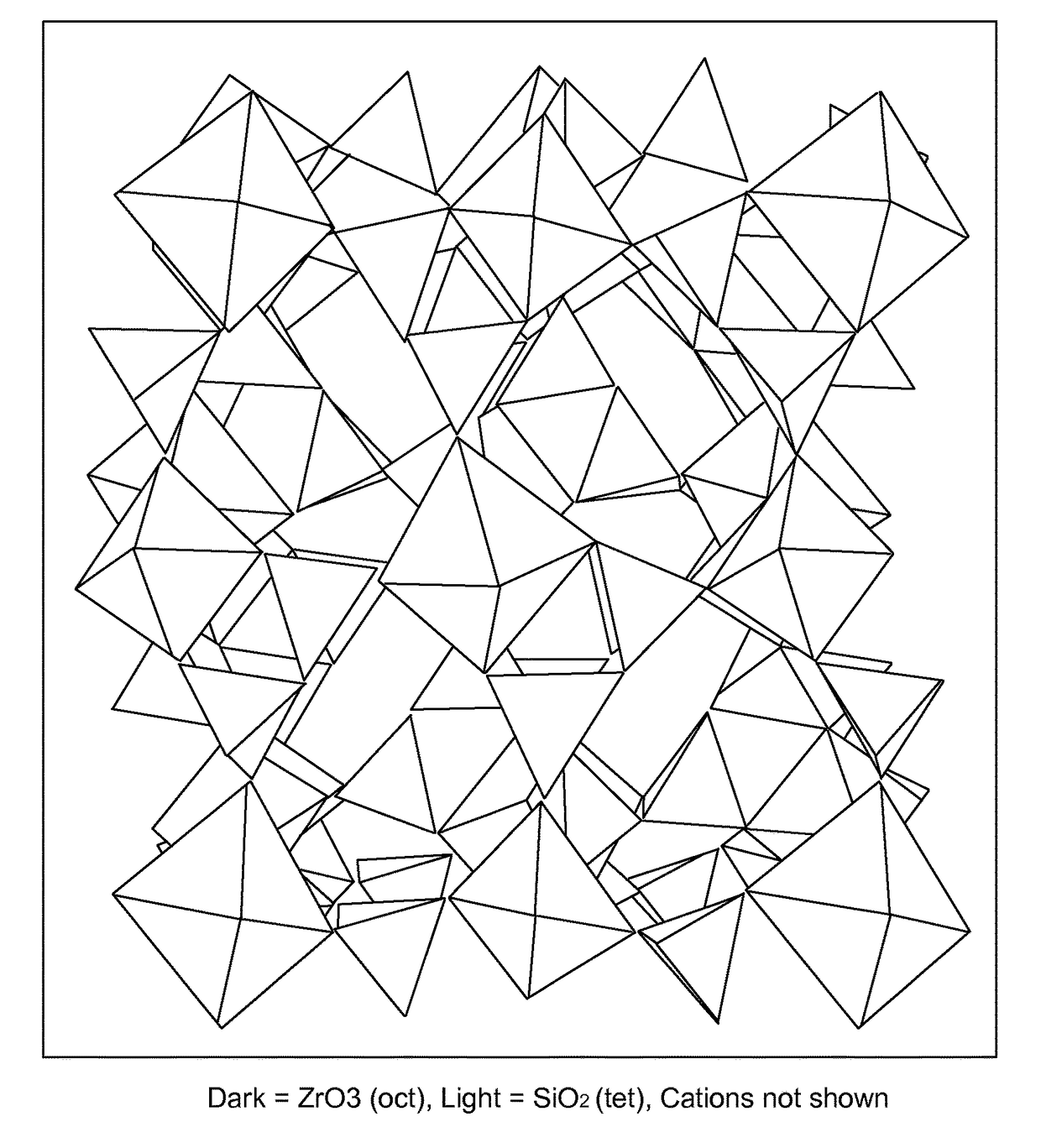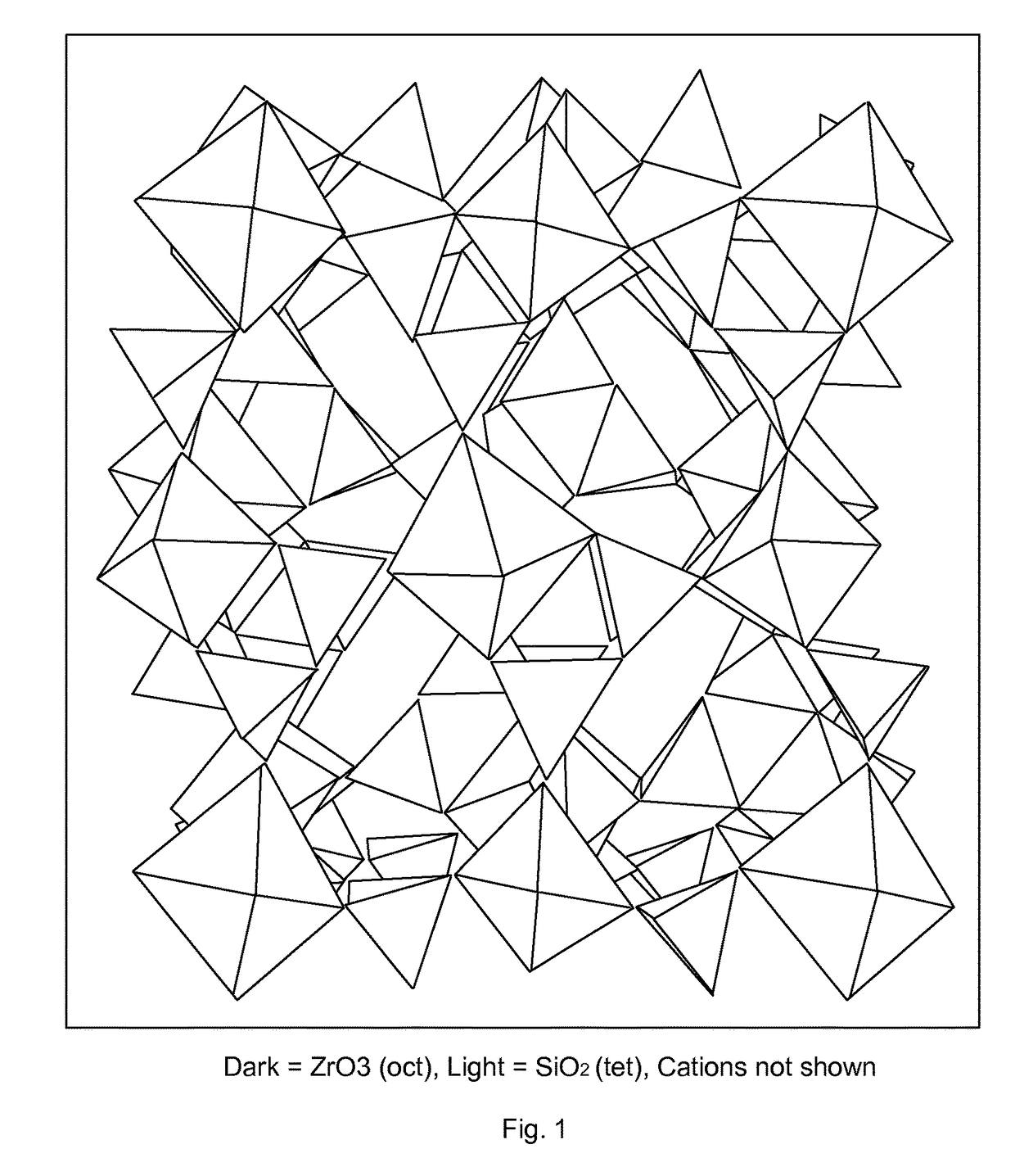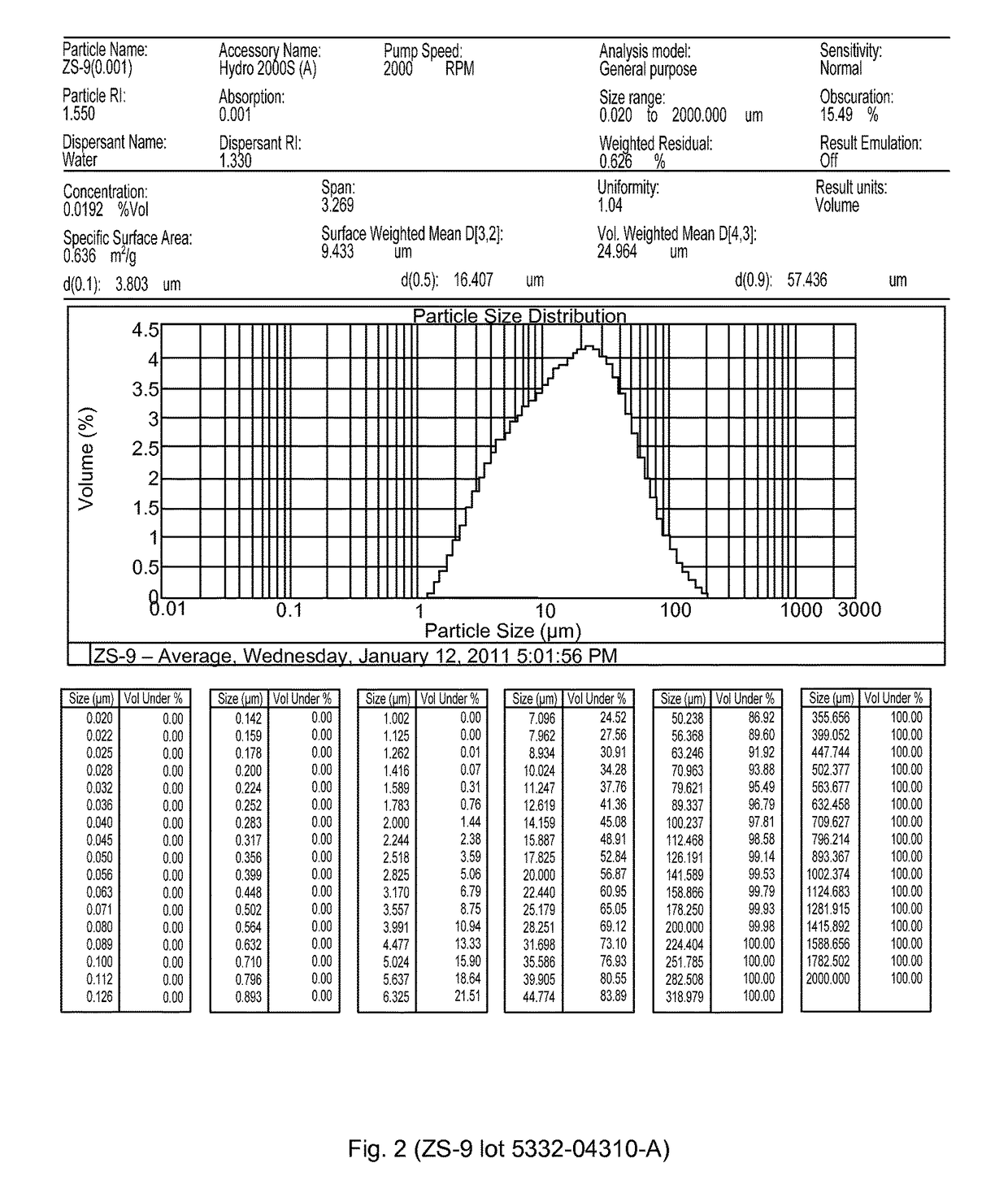Microporous zirconium silicate for the treatment of hyperkalemia in hypercalcemic patients and improved calcium-containing compositions for the treatment of hyperkalemia
a technology of hypercalcemia and microporous zirconium silicate, which is applied in the direction of drug compositions, antinoxious agents, metabolic disorders, etc., can solve the problems of voltage-gated sodium channels, depolarization of cell membrane potential, and acute hyperkalemia. serious life-threatening condition
- Summary
- Abstract
- Description
- Claims
- Application Information
AI Technical Summary
Benefits of technology
Problems solved by technology
Method used
Image
Examples
example 1
[0100]A solution was prepared by mixing 2058 g of colloidal silica (DuPont Corp. identified as Ludox™ AS-40), 2210 g of KOH in 7655 g H2O. After several minutes of vigorous stirring 1471 g of a zirconium acetate solution (22.1 wt. % ZrO2) were added. This mixture was stirred for an additional 3 minutes and the resulting gel was transferred to a stainless steel reactor and hydrothermally reacted for 36 hours at 200° C. The reactor was cooled to room temperature and the mixture was vacuum filtered to isolate solids which were washed with deionized water and dried in air.
[0101]The solid reaction product was analyzed and found to contain 21.2 wt. % Si, 21.5 wt. % Zr, K 20.9 wt. % K, loss on ignition (LOI) 12.8 wt. %, which gave a formula of K2.3ZrSi3.2O9.5*3.7H2O. This product was identified as sample A.
example 2
[0102]A solution was prepared by mixing 121.5 g of colloidal silica (DuPont Corp. identified as Ludox® AS-40), 83.7 g of NaOH in 1051 g H2O. After several minutes of vigorous stirring 66.9 g zirconium acetate solution (22.1 wt. % ZrO2) was added. This was stirred for an additional 3 minutes and the resulting gel was transferred to a stainless steel reactor and hydrothermally reacted with stirring for 72 hours at 200° C. The reactor was cooled to room temperature and the mixture was vacuum filtered to isolate solids which were washed with deionized water and dried in air.
[0103]The solid reaction product was analyzed and found to contain 22.7 wt. % Si, 24.8 wt. % Zr, 12.8 wt. % Na, LOI 13.7 wt. %, which gives a formula Na2.0ZrSi3.0O9.0*3.5H2O. This product was identified as sample B.
example 3
[0104]A solution (60.08 g) of colloidal silica (DuPont Corp. identified as Ludox® AS-40) was slowly added over a period of 15 minutes to a stirring solution of 64.52 g of KOH dissolved in 224 g deionized H2O. This was followed by the addition of 45.61 g zirconium acetate (Aldrich 15-16 wt. % Zr, in dilute acetic acid). When this addition was complete, 4.75 g hydrous Nb2O5 (30 wt. % LOI) was added and stirred for an additional 5 minutes. The resulting gel was transferred to a stirred autoclave reactor and hydrothermally treated for 1 day at 200° C. After this time, the reactor was cooled to room temperature, the mixture was vacuum filtered, the solid washed with deionized water and dried in air.
[0105]The solid reaction product was analyzed and found to contain 20.3 wt. % Si, 15.6 wt. % Zr, 20.2 wt. % K, 6.60 wt. % Nb, LOI 9.32 wt. %, which give a formula of K2.14Zr0.71Nb0.29 Si3O9.2*2.32H2O. Scanning Electron (SEM) of a portion of the sample, including EDAX of a crystal, indicated th...
PUM
| Property | Measurement | Unit |
|---|---|---|
| diameter | aaaaa | aaaaa |
| particle size | aaaaa | aaaaa |
| particle size | aaaaa | aaaaa |
Abstract
Description
Claims
Application Information
 Login to View More
Login to View More - R&D
- Intellectual Property
- Life Sciences
- Materials
- Tech Scout
- Unparalleled Data Quality
- Higher Quality Content
- 60% Fewer Hallucinations
Browse by: Latest US Patents, China's latest patents, Technical Efficacy Thesaurus, Application Domain, Technology Topic, Popular Technical Reports.
© 2025 PatSnap. All rights reserved.Legal|Privacy policy|Modern Slavery Act Transparency Statement|Sitemap|About US| Contact US: help@patsnap.com



